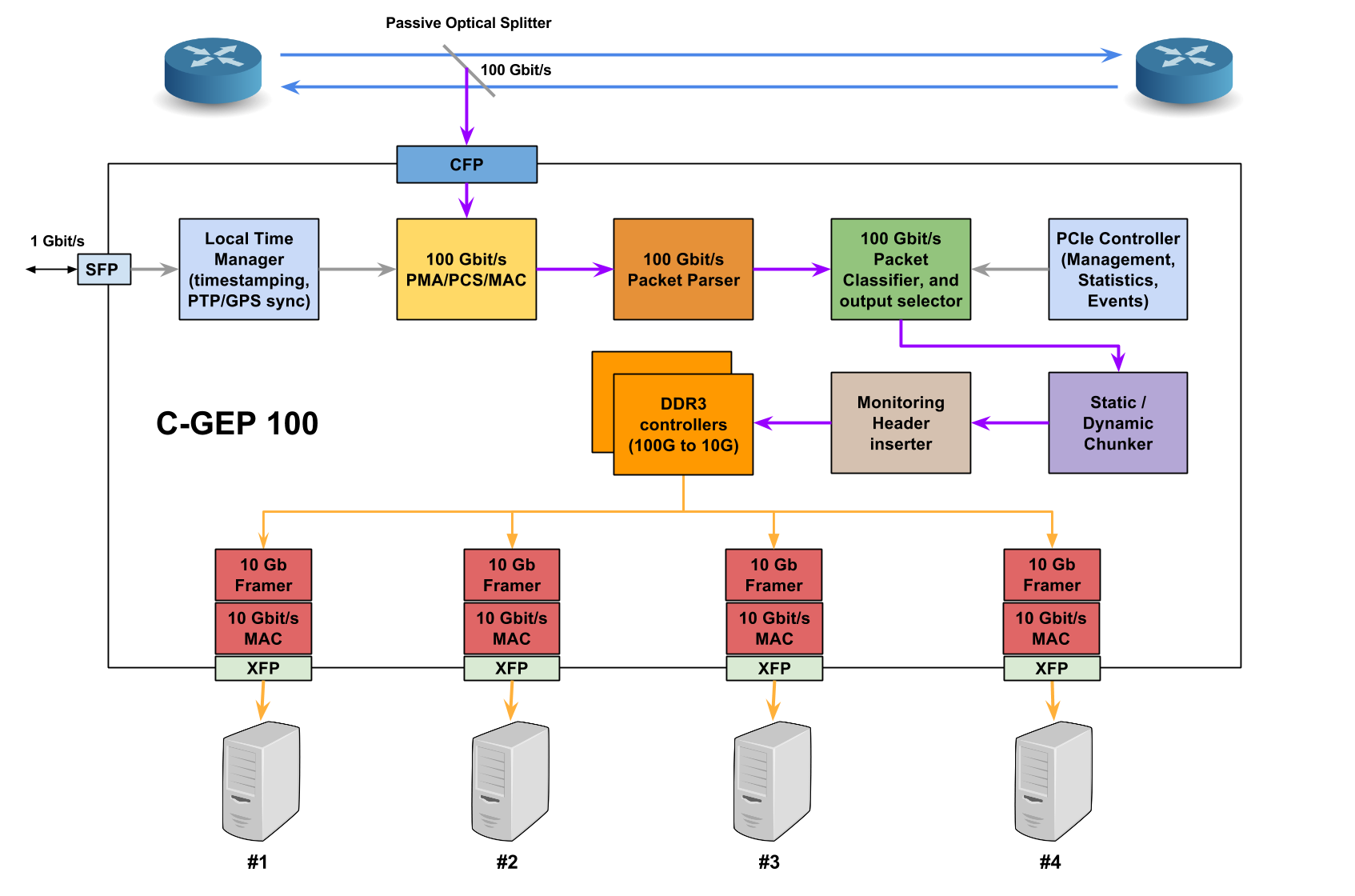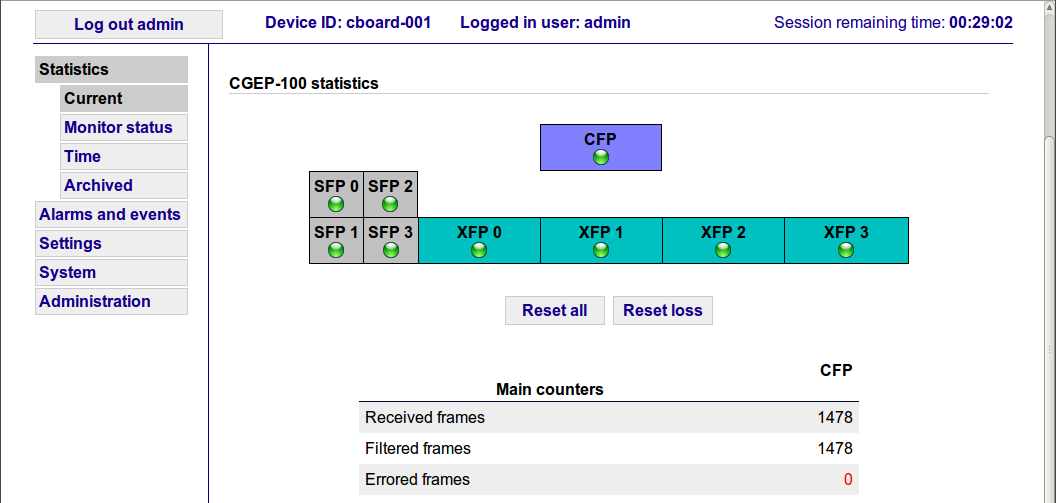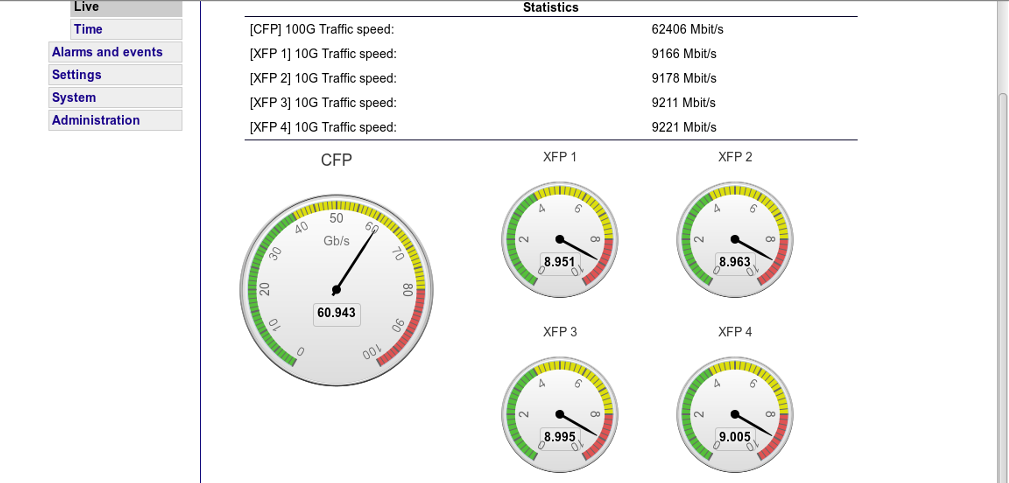C-GEP 100 Monitoring application
The C-GEP 100 Monitoring system's main purpose is to preprocess ethernet frames coming from the 100 Gb/s interface, and then assign and send them to output interfaces by user defined rules. The Ethernet frames get a pre-monitoring header containing the receive timestamp, and original frame length fields. The core also contains a simple, parameterizable 100 Gb/s traffic generator module for stress testing.
FPGA firmware functions
- 100 Gb/s MAC receiver with error detection,
- PTP Timestamp handler module on the 100 Gb/s receivers PCS level for maxium precision,
- Ethernet Frame parser, protocol decoder incl. VLAN, MPLS, IP, TCP, UDP,
- Ethernet Frame filter ruleset, packet chunker, and output interface selector (customizable as needed),
- Monitoring header injector (timestamp, length, magic code fields),
- Packet buffering in 2xDDR3 modules (upto 4Gb/s capable SODIMM modules),
- 10 Gb/s framer, and transmitter to monitors (fe. C-GEP 20 or SGA10GED cards),
- Simple, parameterizable traffic generator: frame data, frame sequence, length, interface-space.

100 Gb/s Monitoring system: 100 Gb/s to 1 Gb/s processing chain
The following figure shows the role of the C-GEP 100 in the monitoring system. Captured 100 Gb/s bps traffic is distributed to multiple C-GEP 20 or SGA-10GED devices which split up the monitored data even more according to the defined filter rules. The monitoring units (PCs) process the packets at the end of the chain.

Web UI management functions
The C-GEP devices have a simple but powerful web-based management interface. Besides current traffic parameters (like frames received, filtered, or dropped), all settings, and events occuring are stored and displayed on an user friendly surface accessible from any web browser.
The following figures show part of the C-GEP 100's main statistics, and live traffic views:

